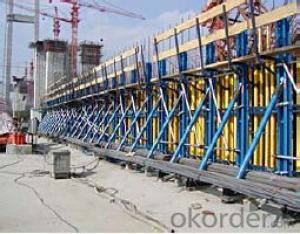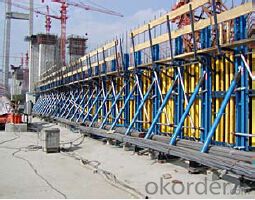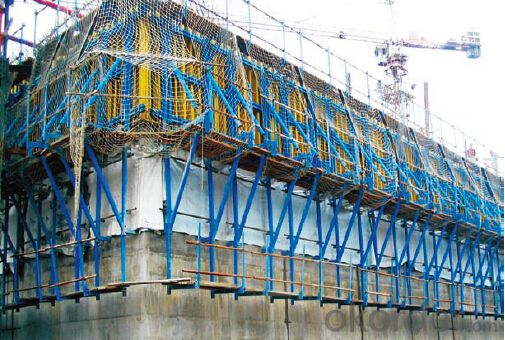Single Side Climbing Bracket for Formwork and Scaffolding Systems
- Loading Port:
- Tianjin
- Payment Terms:
- TT OR LC
- Min Order Qty:
- 50 m²
- Supply Capability:
- 1000 m²/month
OKorder Service Pledge
OKorder Financial Service
You Might Also Like
Single-side Climbing Bracket SCB180:
With CNBM SCB 180 climbing systems, the loads from the fresh concrete pressure are
transferred through the brackets by means of V-strongbacks and compression braces into the
scaffold anchors.
Typical applications for the SCB 180 are dams, locks, cooling towers, pier heads, tunnels, and
bank vaults.
The formwork is simply tilted backwards when striking takes place. The 1.80 m wide bracket
requires only a minimum of space.
Characteristics:
◆ Economical and safe anchoring
The M30/D20 climbing cones have been designed especially for single-sided concreting using
SCB180 in dam construction, and to allow the transfer of high tensile and shear forces into the still
fresh, unreinforced concrete. Without wall-through tie-rods, finished concrete is perfect.
◆ Stable and cost-effective for high loads
generous bracket spacings allow large-area formwork units with optimal utilization of the bearing
capacity. This leads to extremely economical solutions.
◆ Simple and flexible planning
With SCB180 single-sided climbing formwork, circular structures can also be concreted without
undergoing any large planning process. Even use on inclined walls is feasible without any special
measures because additional concrete loads or lifting forces can be safely transferred into the
structure.
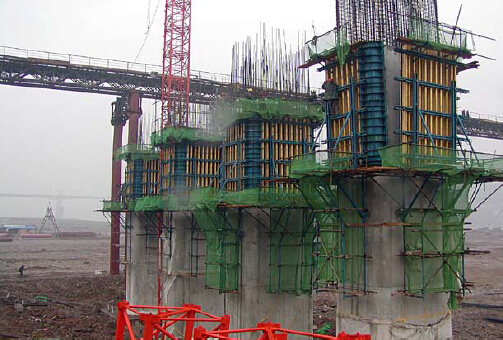
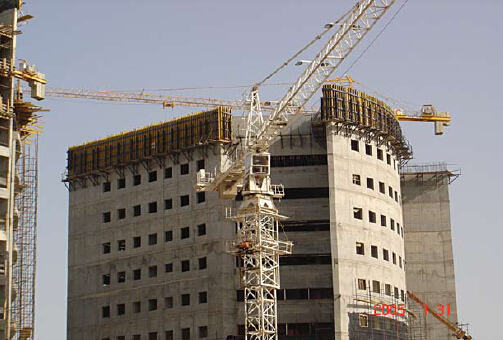
- Q: What are the different types of formwork spacers used in steel formwork?
- There are several different types of formwork spacers used in steel formwork, including plastic spacers, metal spacers, and adjustable spacers. Plastic spacers are commonly used due to their lightweight nature, ease of installation, and durability. Metal spacers are often used in heavy-duty applications or where extra strength is required. Adjustable spacers are versatile and allow for flexibility in creating different formwork thicknesses.
- Q: How does steel formwork affect the overall project budget and cost control?
- Steel formwork can have a significant impact on the overall project budget and cost control. While it tends to have a higher initial cost compared to other formwork systems, its durability and reusability can help offset this expense in the long run. Steel formwork also allows for faster construction and requires fewer labor hours, leading to potential cost savings in terms of reduced labor costs. Additionally, its accuracy and precision help minimize material wastage, further contributing to cost control.
- Q: What are the considerations when selecting the thickness of steel formwork?
- When selecting the thickness of steel formwork, there are several important considerations to take into account. Firstly, the load-bearing capacity of the formwork needs to be considered. The thickness of the steel should be able to withstand the weight of the concrete and any additional loads that may be applied during construction. This includes factors such as the height and pressure of the concrete pour, as well as any equipment or workers that may be on the formwork. Secondly, the durability and longevity of the steel formwork must be considered. The thickness should be chosen to ensure that the formwork can withstand the wear and tear of construction activities, as well as any potential exposure to environmental factors such as corrosion or extreme weather conditions. Thicker steel can provide greater strength and resistance to these factors. Another important consideration is the desired surface finish of the concrete. Thinner steel formwork may result in a smoother surface finish, while thicker formwork may leave a more textured or patterned finish. The thickness should be selected based on the desired aesthetic outcome of the project. The cost of the steel formwork is also a significant consideration. Thicker steel is generally more expensive than thinner steel, so it is important to find a balance between the required strength and the available budget. In some cases, a combination of different thicknesses may be used to optimize cost-effectiveness. Lastly, the ease of handling and installation should be considered. Thicker steel formwork can be heavier and more challenging to handle, so the available equipment and labor resources should be taken into account. The thickness should be chosen in a way that ensures safe and efficient installation. In conclusion, when selecting the thickness of steel formwork, it is essential to consider the load-bearing capacity, durability, desired surface finish, cost, and ease of handling. By carefully evaluating these considerations, one can select the most appropriate thickness for the specific construction project.
- Q: How does steel formwork affect the overall fire resistance of the structure?
- Steel formwork does not directly affect the overall fire resistance of a structure. Fire resistance of a building mainly depends on the materials used for the structural elements such as columns, beams, and floors. Steel formwork, which is used as a temporary mold or support during construction, is not a structural element itself. However, steel formwork can indirectly influence the fire resistance of a structure in two ways. Firstly, if the steel formwork is left in place after construction, it can act as an additional layer of protection against fire. Steel has a high melting point and can withstand high temperatures for a longer duration compared to other materials. Therefore, if the formwork is left in place, it can provide some level of fire resistance to the structure. Secondly, the use of steel formwork can affect the fire resistance of the structure by influencing the construction process. The formwork system should be installed and secured properly to ensure the structural elements are correctly positioned and aligned. Properly installed formwork helps in achieving accurate dimensions and proper reinforcement placement, which are crucial for maintaining the fire resistance of a structure. In summary, steel formwork itself does not have a direct impact on the fire resistance of a structure. However, if the formwork is left in place after construction, it can provide some additional fire resistance. Moreover, the proper installation and use of steel formwork can indirectly contribute to the fire resistance of a structure by ensuring accurate construction and reinforcement placement.
- Q: Can steel formwork be used for underwater concrete structures?
- Yes, steel formwork can be used for underwater concrete structures. Steel is a durable and strong material that can withstand the pressure and corrosive effects of water. It provides a reliable support system for pouring and shaping concrete in underwater conditions, ensuring the stability and integrity of the structure.
- Q: How does steel formwork contribute to the speed of construction?
- Steel formwork contributes to the speed of construction by providing a durable and reusable framework for casting concrete. Its strength and stability allow for faster and more efficient construction processes, as it can withstand the pressure of fresh concrete and can be easily assembled and dismantled. Additionally, steel formwork eliminates the need for traditional timber formwork, reducing construction time and costs associated with material procurement and labor-intensive tasks like cutting and shaping.
- Q: Are there any fire safety considerations when using steel formwork?
- When using steel formwork, it is crucial to take fire safety into account. Steel is a non-combustible material, meaning it does not burn or contribute to the spread of fire. However, it can lose its strength and structural integrity in high temperatures during a fire, potentially leading to structural failure, collapse, and the risk of injuries or fatalities. To mitigate these risks, it is necessary to implement proper fire safety measures. Considerations include: 1. Fire-resistant coatings: Applying fire-resistant coatings to the steel formwork helps protect it from heat and reduces the risk of structural failure during a fire. These coatings can offer additional fire resistance and be rated for specific fire durations. 2. Adequate fire protection systems: Installing and maintaining fire protection systems, such as sprinklers, fire extinguishers, and fire alarms, is essential for early fire detection and suppression. This prevents the fire from reaching the steel formwork and minimizes structural damage. 3. Fire-resistant barriers: Installing fire-resistant barriers, like fire-rated walls or partitions, contains the spread of fire and provides extra protection to the steel formwork. These barriers limit exposure to high temperatures and minimize the risk of structural failure. 4. Regular inspections and maintenance: Regularly inspecting the steel formwork for damage or corrosion is crucial to identify potential weak points that compromise its fire resistance. Promptly addressing any issues and repairing or replacing damaged sections is necessary. 5. Adequate fire escape routes: Ensuring accessible and well-marked fire escape routes near the steel formwork is vital for workers' safety in case of a fire. These routes should be obstruction-free and easily accessible for quick evacuation. Implementing these fire safety considerations significantly reduces the risk of structural failure and injuries associated with steel formwork. It is important to adhere to local building codes and regulations and consult fire safety professionals to ensure appropriate fire protection measures are in place.
- Q: Can steel formwork be used for water retaining structures?
- Water retaining structures can indeed utilize steel formwork. One of the notable characteristics of steel formwork is its strength, durability, and ability to withstand high pressures. When designed and constructed correctly, steel formwork can establish a watertight seal and effectively resist the hydrostatic pressure exerted by water. Moreover, steel formwork facilitates a uniform and smooth finish, minimizing the chances of water leakage. However, it is crucial to implement appropriate waterproofing measures, including the use of suitable sealing materials and techniques, to prevent potential water leakage or seepage through joints or connections. Consistent inspection and maintenance are also indispensable to ensure the long-term integrity of the water retaining structure.
- Q: Types of building templates? What is the clear water template
- 1 plastic template: at present, there are many companies to develop a variety of plastic template, such as hard template, reinforced plastic wood plastic composite template, GMT plastic, plastic and plastic floor template template template system, reduce wood cutting, replacing the traditional technology with new technology, I believe the future will be used widely used in building materials industry.
- Q: Can steel formwork be used for airport runway construction?
- Airport runways can indeed be constructed using steel formwork. Steel formwork is a versatile and durable option for building concrete structures, including runways. It offers numerous advantages compared to other forms of formwork, such as timber or aluminum. To begin with, steel formwork provides a high level of strength and stability, ensuring an efficient and accurate concrete pouring process. This is crucial in runway construction, as the surface must be even and strong enough to withstand heavy aircraft traffic. Additionally, steel formwork is reusable, making it cost-effective for large-scale projects like airport runways. Its durability allows for multiple uses, reducing the need for frequent replacements and saving both time and money. Moreover, steel formwork can be easily assembled and disassembled, making it convenient for construction sites with tight schedules or limited space. Its modular design allows for quick installation and adjustment, enabling efficient construction progress. Furthermore, steel formwork exhibits excellent resistance to various weather conditions, including extreme temperatures and moisture. This is vital for airport runways, which endure constant wear and tear from aircraft as well as harsh weather conditions. In conclusion, steel formwork is a suitable choice for airport runway construction due to its strength, reusability, ease of use, and resistance to different weather conditions. Its ability to provide a stable and durable surface makes it an ideal option for creating runways capable of handling heavy aircraft traffic.
Send your message to us
Single Side Climbing Bracket for Formwork and Scaffolding Systems
- Loading Port:
- Tianjin
- Payment Terms:
- TT OR LC
- Min Order Qty:
- 50 m²
- Supply Capability:
- 1000 m²/month
OKorder Service Pledge
OKorder Financial Service
Similar products
Hot products
Hot Searches
